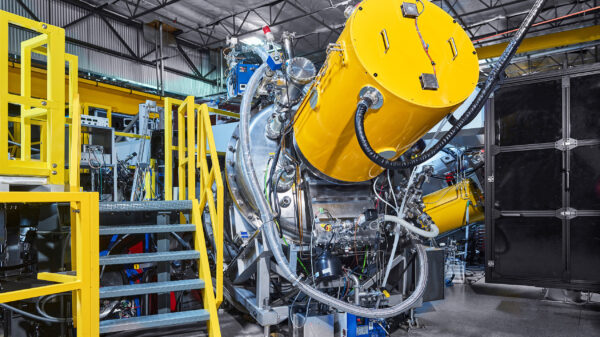Researchers at the University of Illinois Urbana-Champaign have provided evidence supporting the existence of a theorized massless particle, often referred to as a “demon.” This discovery, based on studies of the metal strontium ruthenate, could significantly enhance the understanding of high-temperature superconductivity. The findings were published recently, marking a notable advancement in condensed matter physics.
The term “demon” in this context does not evoke a supernatural entity but rather refers to a concept introduced by physicist David Pines in 1956. Pines theorized that this particle, known as a plasmon, could explain the behaviors of certain exotic materials that exhibit superconductivity. Plasmons are essentially waves that propagate through the electron plasma, and the demon variant is characterized by its massless and neutral properties.
Implications for Superconductivity Research
The implications of this discovery are profound, particularly for the field of superconductivity. High-temperature superconductors, which operate at temperatures above the boiling point of liquid nitrogen, have long puzzled scientists. Current theories suggest that understanding how massless particles like the demon interact with other particles could lead to breakthroughs in the development of more efficient superconducting materials.
The University of Illinois team utilized advanced experimental techniques to identify the presence of this massless plasmon in strontium ruthenate. Their research demonstrates that the demon likely exists at room temperature, which could open new avenues for practical applications in electronics and energy transmission.
A Step Forward in Quantum Mechanics
This achievement not only reinforces the validity of Pines’ theory but also showcases the evolving nature of quantum mechanics. The discovery of the demon represents a leap in the experimental verification of theoretical predictions in physics. As scientists continue to unravel the complexities of condensed matter, findings like this one contribute to a deeper understanding of fundamental principles that govern the behavior of matter at quantum levels.
The work exemplifies the ongoing quest to bridge theoretical physics with practical applications, potentially leading to innovations in technology that rely on superconducting materials. As research progresses, the implications for industries ranging from energy to computing are likely to be significant.
In summary, the identification of this massless demon particle signifies a critical advancement in condensed matter physics, offering new insights into the functioning of high-temperature superconductors. The contributions of researchers at the University of Illinois Urbana-Champaign underscore the importance of theoretical frameworks in guiding experimental physics and enhancing our understanding of the quantum world.






































































